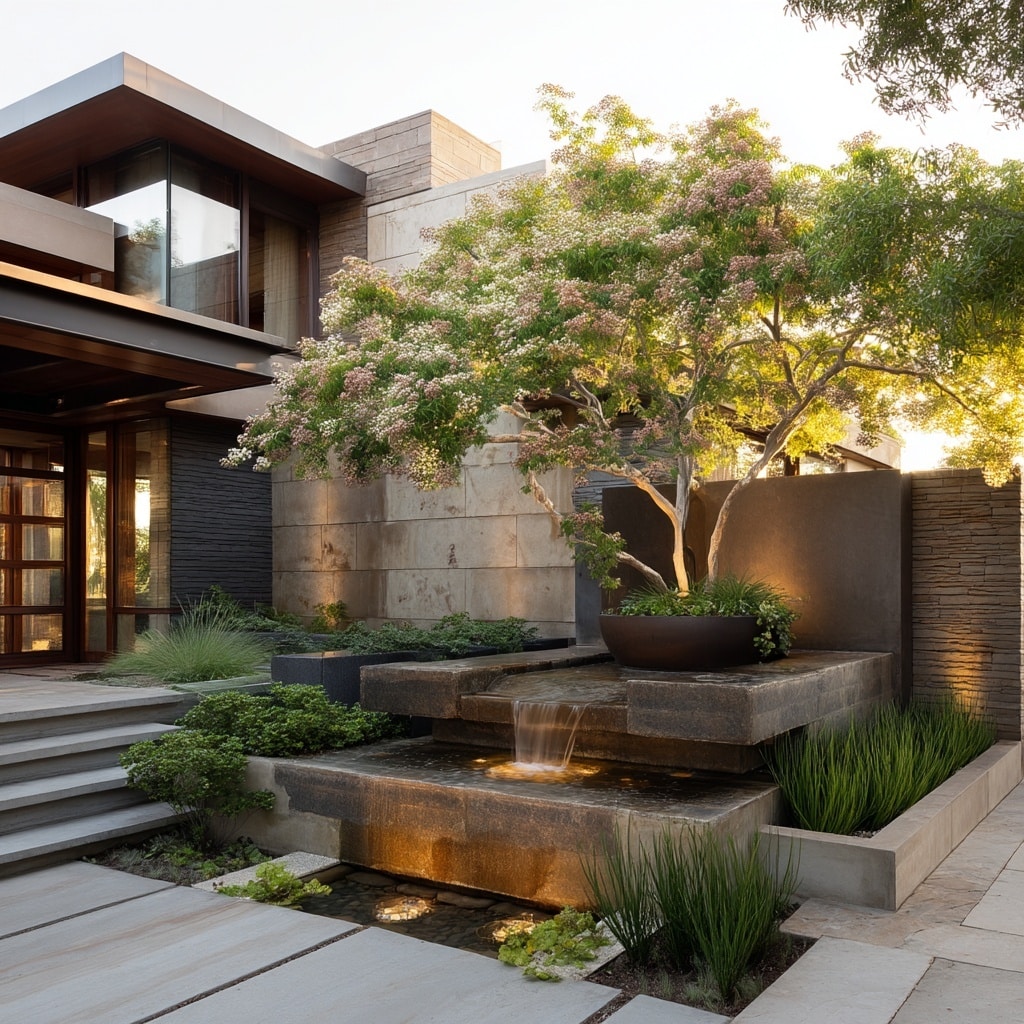Front yard landscaping plays a vital role in enhancing curb appeal and making a lasting impression on visitors. The shape and layout of your lawn can transform the entire look of your home, creating a welcoming atmosphere that reflects your personal style. Whether you’re working with a small patch of grass or an expansive yard, choosing the right lawn shape is the foundation for a beautiful and functional landscape.
From formal, circular lawns to creative, free-flowing designs, each option offers unique benefits suited to different preferences and property sizes. In this article, we’ll guide you through four versatile lawn shapes and offer design ideas that can elevate your front yard landscaping into a space you’ll be proud of year-round.
Table of Contents
How to Choose the Right Front Yard Landscaping Design
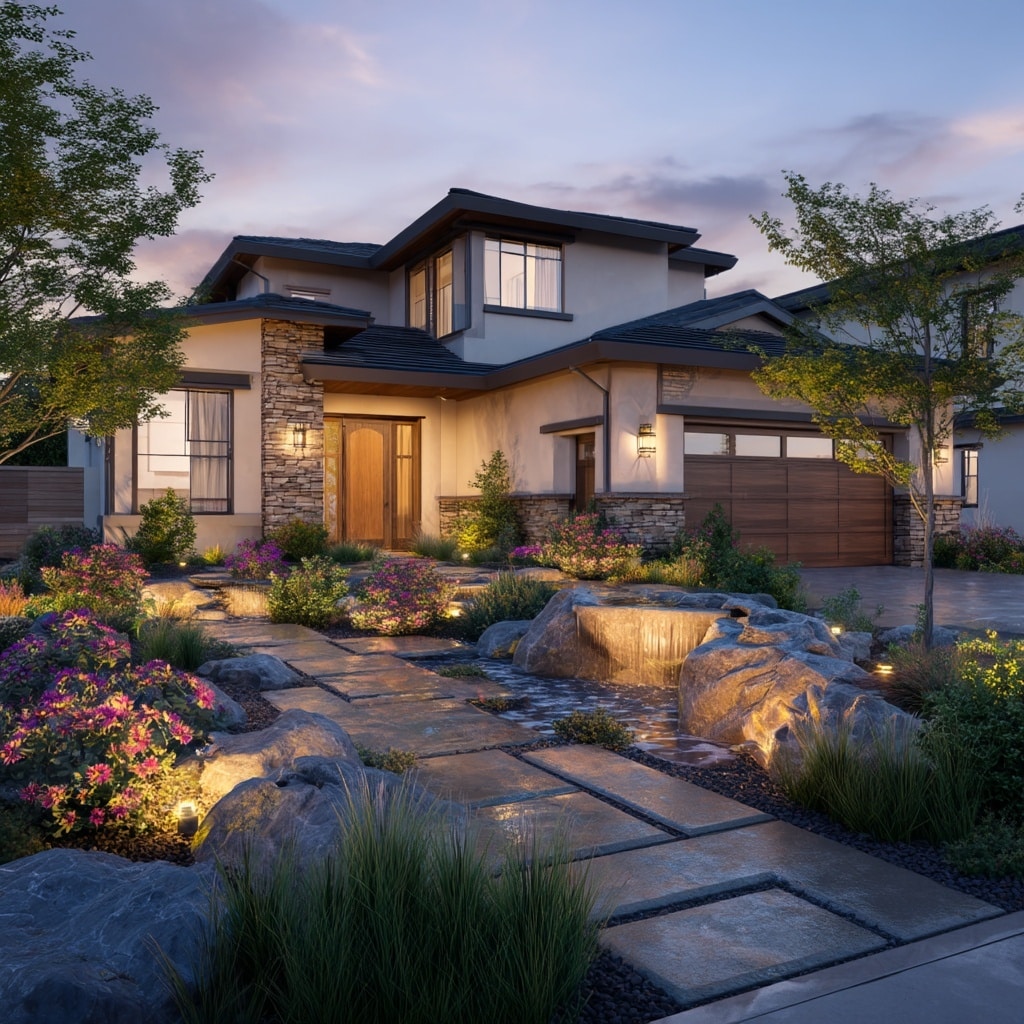
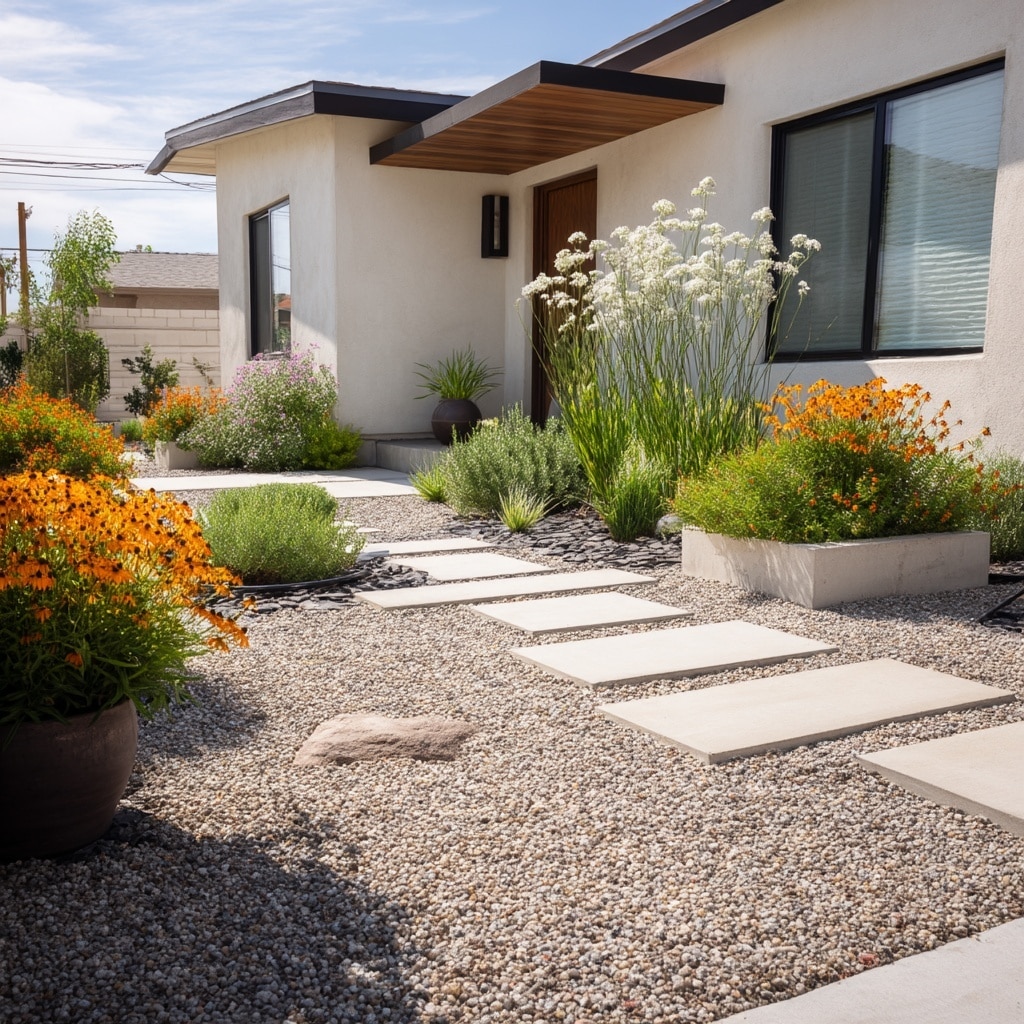


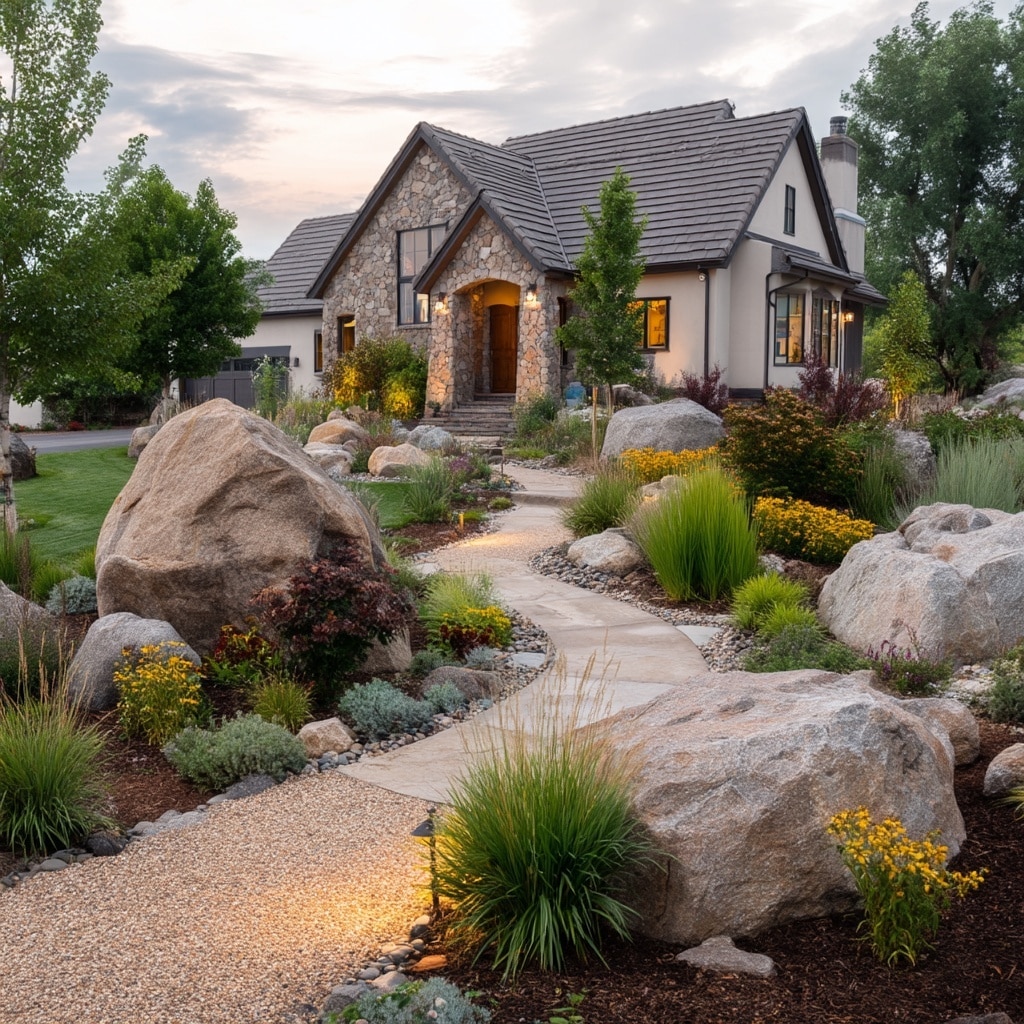
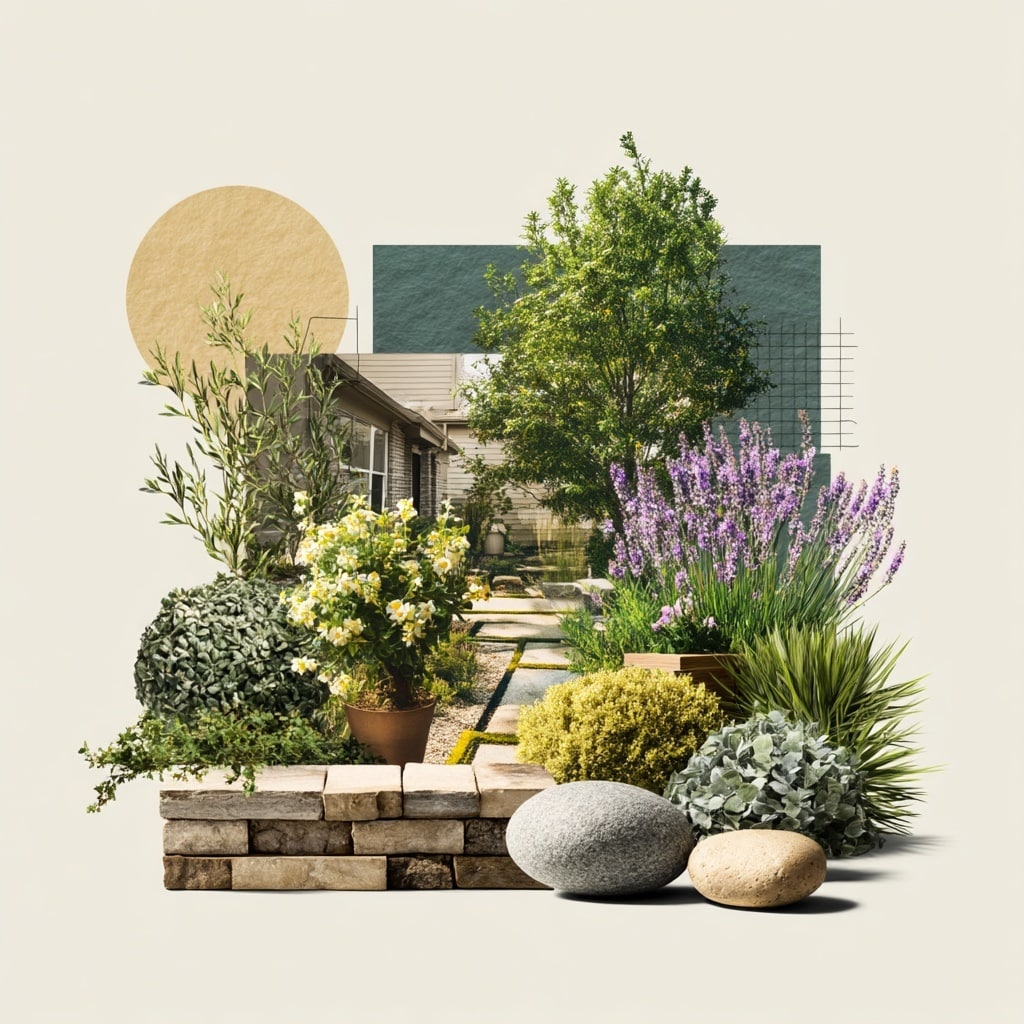
When it comes to front yard landscaping, the shape of your lawn sets the stage for everything else. It affects how space is used, the flow of your design, and how easy it is to maintain. The right lawn shape depends on the size of your yard, how you plan to use it, and the overall style of your home. Below are four popular lawn shapes that homeowners love—and ideas on how to make each one work beautifully.
1. Circular Lawns
Circular lawns bring structure and elegance to small front yards. Their symmetrical shape makes them ideal for homeowners who enjoy outdoor entertaining or want a cozy focal point. A circular lawn pairs well with curved flower beds, paver borders, and central features like a birdbath or garden sculpture.
If your space allows, consider oval or semi-circular variations to soften harsh angles and add flow. This shape works best in traditional or formal front yard landscaping designs.
2. Rectangular Lawns
For larger yards, a rectangular lawn offers both simplicity and flexibility. It creates clear lines and zones, making it easier to divide your space into functional areas—like a play zone for kids or a sitting area for guests.
Rectangular lawns are also easier to mow and edge, which makes them a great choice for low-maintenance front yard landscaping. Adding striped mowing patterns can give your lawn a polished, professional look that enhances depth and curb appeal.
3. Open Lawns
If your vision includes lush greenery, garden beds, and trees, an open lawn layout is ideal. It offers a spacious, informal feel that complements nature-focused front yard landscaping. This design gives you room to plant seasonal flowers, install a bench under a shade tree, or add a gravel pathway through the grass.
Open lawns suit families who enjoy spending time outdoors and want flexibility in how they use their space—from playing catch to relaxing under the sun.
4. Free-Flowing Lawns
For a more artistic or natural look, a free-flowing lawn allows creativity to take center stage. With curved lines and meandering borders, this layout breaks away from traditional symmetry and creates a soft, relaxed feel.
This shape works best in larger front yards where you can incorporate layers of plants, hidden corners, or even a small water feature. A free-flowing design adds character and mystery to your front yard landscaping, inviting visitors to explore every angle.
Integrating Lawn Shape with Your Landscaping Theme
A well-designed lawn is only part of the puzzle. To truly elevate your front yard landscaping, it’s important to connect the shape of your lawn with the overall design theme of your yard. Whether your style leans modern, traditional, or natural, your lawn should work seamlessly with surrounding features like pathways, garden beds, lighting, and seating areas.
Here are some ideas to create harmony between your lawn and the rest of your landscape:
Blend the Lawn with a Purposeful Driveway
Instead of treating the driveway as a separate zone, integrate it with your lawn using curved edges, soft transitions, or greenery alongside. This creates a smooth visual flow and boosts curb appeal. For circular or rectangular lawns, a brick or paver border can help define the transition while complementing your home’s architectural style.
Add a Low-Maintenance Rock Garden
If you’re short on time or prefer a clean, modern look, a rock garden is an ideal complement to your lawn. Place it in a corner or near the edges to break up green space and introduce texture. Use drought-tolerant plants or succulents to add color without demanding much upkeep.
This works particularly well with open or free-flowing front yard landscaping designs.
Install Eye-Catching Focal Points
Fountains, sculptures, or large decorative planters can act as focal points that visually connect your lawn to surrounding hardscape elements. Position these strategically—such as at the center of a circular lawn or the end of a stone path—to create balance and interest.
Focal points also help define areas of your yard without overwhelming the space.
Use Ornamental Landscape Lighting
Subtle lighting can enhance the beauty of your lawn after dark. Install low-voltage lights along walkways or under shrubs to highlight curves and textures. Uplighting a tree or statue adds drama and dimension, especially in rectangular or layered designs.
Lighting not only boosts safety but also gives your front yard landscaping a warm, finished look.
Design a Cozy Seating Area
Integrate a small seating nook—such as a bench under a tree or a bistro table near your flower beds—to make your lawn more inviting. Use pavers, gravel, or a raised deck to define the space while blending it naturally with the lawn’s shape.
This touch adds comfort and functionality without compromising on style.
Low-Maintenance Small Front Yard Landscaping Tips & Ideas
Not every front yard has to be big to be beautiful. With the right planning and smart plant choices, even small spaces can deliver stunning results without becoming a chore to maintain. If you’re short on time or prefer a simple routine, the following front yard landscaping tips are perfect for creating a low-maintenance, stylish yard that still packs a visual punch.
Keep It Simple
In a small yard, simplicity can make a big impact. Focus on a clean, uncluttered layout with just a few well-chosen features. A neat lawn or a gravel base sets the tone. Add a couple of statement plants or a single flowering tree rather than overloading the space.
Stick to symmetry or clear lines to give your front yard a polished look without requiring constant attention. Less truly is more in small-scale front yard landscaping.
Fill the Space with Flowers
Colorful blooms can brighten up a small yard instantly. Choose flower varieties that bloom in different seasons so your front yard stays lively all year long. Annuals like marigolds and petunias offer quick color, while raised beds or window boxes maximize growing space.
Grouping flowers by color or height can create a more organized and intentional appearance—helping small spaces look more vibrant and structured without adding maintenance work.
Plant Perennial Flowers
Perennials are a smart choice for low-maintenance landscaping. These plants come back year after year, saving you time and money in the long run. Great options include daylilies, black-eyed Susans, and hostas—all of which are hardy, colorful, and require minimal care.
Use mulch around perennials to keep moisture in and weeds out, which reduces watering and weeding. Combining perennials with a few annuals will give your front yard landscaping dynamic beauty across the seasons.
Modern Front Yard Landscaping Design Ideas
If your goal is a clean, stylish look that feels both fresh and functional, modern design elements can take your front yard landscaping to the next level. Think simple lines, layered textures, and features that enhance both aesthetics and usability.
Here are a few design upgrades that work well in contemporary homes and modern spaces:
Layered Greenery for Depth
Instead of planting everything at the same height, try layering plants from tallest in the back to shortest in the front. This creates visual depth and adds structure to your landscape. Use a mix of evergreen shrubs, ornamental grasses, and low-growing flowers for year-round appeal.
A layered approach works beautifully along fences, near porches, or as a soft frame for pathways—offering dimension without feeling crowded.
Add a Water Feature
Even a small water feature can bring a sense of calm and sophistication to your front yard landscaping. A minimalist fountain, reflective basin, or stone birdbath adds movement and interest without taking up much space.
Water features also attract birds and create a relaxing ambiance—especially when paired with subtle lighting or nestled into a plant bed.
Include a Flowering Tree
Flowering trees provide color, shade, and structure all in one. They’re also perfect as focal points in modern yards. Trees like cherry blossom, magnolia, or dogwood can soften the lines of a modern design while adding seasonal beauty.
Place the tree in a central or offset location to draw the eye and create balance. Just be sure to choose a tree that fits your climate and yard size so it thrives with minimal upkeep.
Landscaping Ideas with No Grass
If mowing, watering, and fertilizing aren’t your thing—or if your climate makes grass tough to maintain—you’re not alone. More homeowners are ditching traditional lawns in favor of creative, grass-free front yard landscaping solutions. These options not only save time and water but can also make your yard stand out with bold texture and style.
Use Stone for a Stylish Foundation
Stones are incredibly versatile and perfect for crafting a modern, low-maintenance landscape. You can combine larger rocks as focal points with gravel or pebbles to fill in space between walkways, planters, or raised beds.
Crushed granite and river rocks offer a sleek, finished look while helping with drainage and weed control. Pair stone elements with greenery or succulents for a sharp contrast that’s both natural and clean.
Choose Evergreens for Year-Round Green
Evergreen shrubs and plants give your front yard a consistent, vibrant look no matter the season. Boxwoods, junipers, and dwarf pines work well in structured layouts or organic clusters.
They require very little upkeep and hold their shape beautifully over time. For added variety, use evergreens in different heights and textures to create visual interest across your front yard landscaping design.
Go Faux with Artificial Grass
Artificial turf has come a long way in appearance and quality. It now mimics the look and feel of real grass—without the mowing, watering, or fertilizing. It’s also pet-friendly, UV-resistant, and ideal for areas with poor soil or heavy foot traffic.
Use it to create defined green zones, play areas, or even around seating spaces. Faux grass fits well into modern designs and works seamlessly with stone, concrete, or paver elements.
Landscaping Ideas with Rocks
Rocks are more than just filler—they can be a defining design element in your front yard landscaping. Whether you use them to build structure, add texture, or create movement, rock features offer a timeless, low-maintenance alternative to grass or heavy planting.
Here are three smart ways to use rocks effectively in your front yard:
Give Gravel a Go
Gravel is one of the easiest and most budget-friendly materials for transforming your yard. It works well for paths, patios, or garden borders, and comes in a wide range of sizes and colors. Use fine gravel for walking surfaces and larger stones to create contrast or outline key areas.
In addition to adding visual appeal, gravel improves drainage and helps suppress weeds—making it ideal for water-conscious front yard landscaping.
Create a Stone Pathway
Stone paths are both practical and beautiful. They guide guests to your front door while contributing to the overall structure of your yard. Choose irregular flagstones for a relaxed, natural look, or go with cut stone for a clean, modern feel.
Enhance the path by planting low ground cover or moss between stones, or surround it with mulch or gravel to tie in other textures. This small addition can dramatically improve both curb appeal and usability.
Embrace Asymmetry for a Natural Feel
While symmetrical landscapes offer balance, asymmetry can make your yard feel more dynamic and organic. Use rocks in varying shapes and sizes to build visual interest—placing large boulders off-center or grouping smaller stones in clusters.
Pair these with a mix of ornamental grasses, succulents, or native plants for a layered, effortless look. Asymmetrical rock arrangements are perfect for modern front yard landscaping that doesn’t look overdesigned but still feels intentional and welcoming.
Frequently Asked Questions
1. How can I make my front yard look amazing without spending a fortune?
Focus on smart planning and small changes with big visual impact. Start with clean edges, fresh mulch, and a few statement plants. Use affordable materials like gravel, reclaimed stone, or low-cost native plants. Even repainting your front door or adding solar lights can enhance your front yard landscaping without breaking the bank.
2. What is the most expensive part of front yard landscaping?
Hardscaping—such as installing stone patios, retaining walls, or custom pathways—usually costs the most. Hiring professionals, heavy equipment, and premium materials can quickly add up. To manage costs, mix DIY-friendly elements with one or two splurge features for a balanced budget.
3. How do I improve curb appeal fast?
Keep the lawn neat, trim hedges, and add color near the entrance with potted plants or flowers. Replacing outdated house numbers or light fixtures can also boost curb appeal instantly. A tidy, well-maintained front yard landscaping layout makes a stronger first impression than an overcomplicated design.
4. Are there eco-friendly options for front yard landscaping?
Yes! Try xeriscaping, which uses drought-tolerant plants and efficient irrigation to save water. Incorporate native plants, use organic mulch, and opt for permeable materials like gravel or stepping stones. Composting and natural pest control also reduce environmental impact while supporting a healthy yard.
5. How do I create a low-maintenance landscape?
Choose slow-growing or perennial plants, install mulch to reduce weeds, and limit grassy areas. Replace hard-to-mow spots with stone, gravel, or ground cover. Automated drip irrigation systems also make watering easier. The key to low-maintenance front yard landscaping is simplicity and smart plant selection.
Conclusion
Choosing the right lawn shape and design elements can completely transform your front yard landscaping into a beautiful, functional space that enhances curb appeal and reflects your personal style. Whether you prefer the clean lines of a rectangular lawn, the charm of a flowering tree, or a low-maintenance rock garden, the key is selecting features that fit your space, lifestyle, and long-term goals.
By blending thoughtful design with practical elements, you can create a front yard that’s not only stunning—but also easy to maintain year-round.

